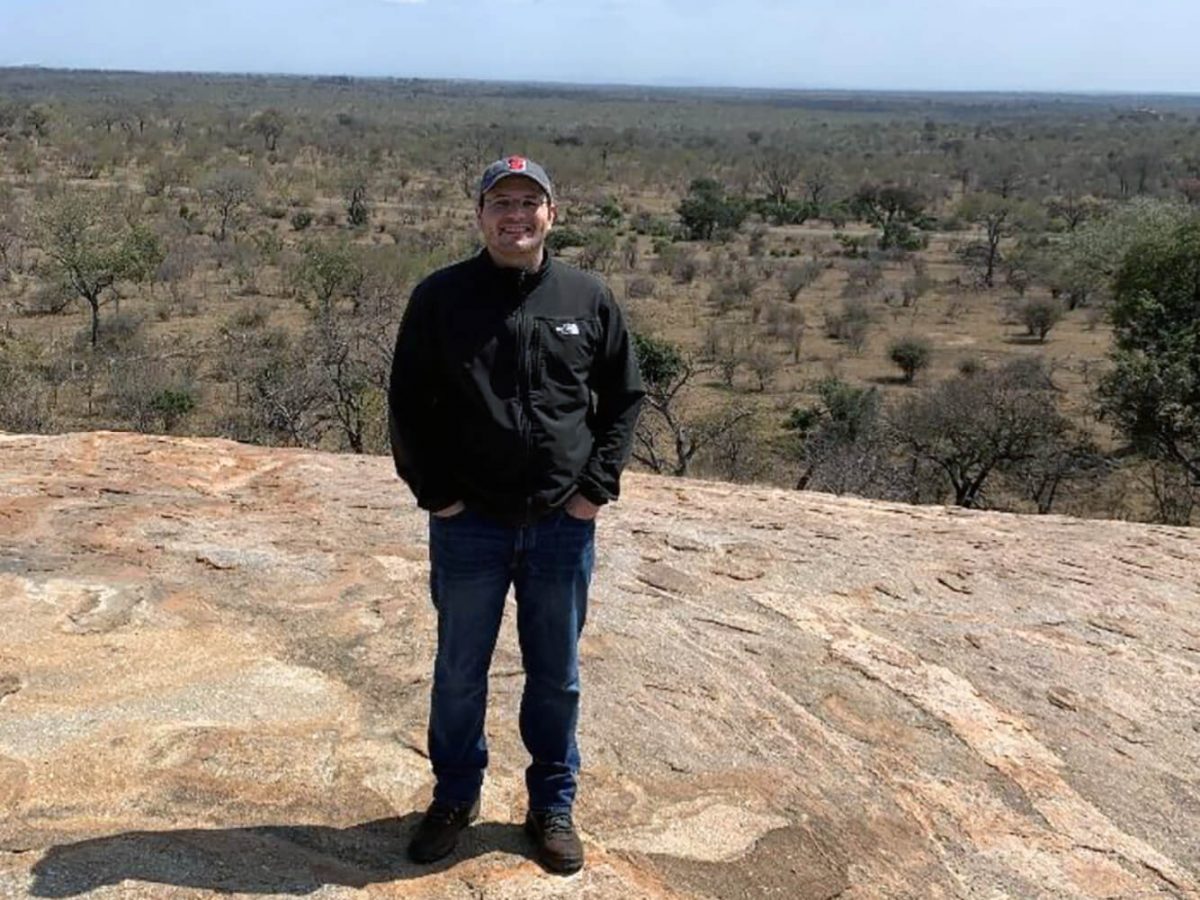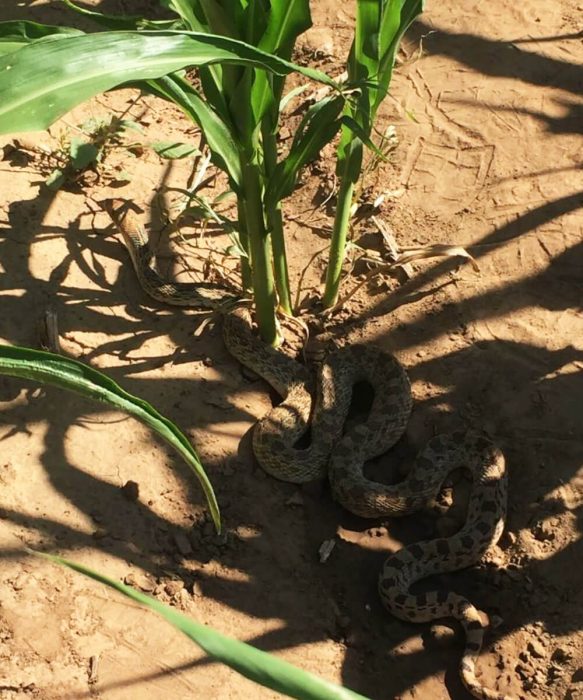
Visiting the Kruger National Park in South Africa during the Kirkham Conference, 2022.
New soil science prof seeks to design efficient, climate-friendly cropping systems
Dr. Henrique Da Ros Carvalho joined the Department of Soil Science as Assistant Professor in Agricultural Meteorology on July 1, 2023. He grew up in Brazil before moving to the United States to pursue his graduate and post-doctoral studies with a focus on environmental biophysics. Henrique likes to explore how the physical environment impacts plants and animals, although he draws the line at snakes.
Tell us about yourself.
I grew up in the State of São Paulo in Brazil (Southeast part of the country). I received my BSc from the University of São Paulo and then moved to Texas where I obtained my MSc and PhD degrees from Texas A&M University. Before joining the University of Manitoba, I was a Postdoctoral Research Scholar at North Carolina State University.
Different names have been used to refer to my area of studies throughout the years, but the ones I like are “agricultural meteorology”, “micrometeorology”, or “environmental biophysics”. In this discipline we seek to understand how the physical environment (e.g., solar radiation, humidity, wind speed, air temperature, etc.) influences the growth and development of plants and animals. In order to do that, we set up sensors in the field to measure how much solar radiation plants are absorbing, how much water they are using, how much carbon dioxide they are taking up, etc. I find it a lot of fun.
Why did you get into this area of study?
Agriculture has always been a part of my life. My grandfather was a farmer and my father worked for a state level agricultural research and extension agency in Brazil. Spending time with my grandfather and my father motivated me to pursue a degree in “Agronomic Engineering” at the School of Agriculture (ESALQ for short) of the University of São Paulo. When I was an undergraduate student there, I participated in a 6-month internship program with Texas A&M University where my job was to drive around Texas to fix weather stations, download data, calibrate sensors, etc., as part of the weather station program they had at the time. That was a great experience, and I really enjoyed all aspects of that work. That internship eventually led me to my MSc and PhD projects. During graduate school I had the opportunity to learn more about the physics of the environment and how to put together instruments to make measurements in the field. My graduate advisors were great mentors and were a big influence on me as well. Studying how organisms (e.g., plants and animals) are influenced by the environment is something that fascinates me.
What are you seeking to explore with your research?
The greatest challenge of my generation is to figure out how we can continue to use our natural resources to produce food, feed, fiber, and energy in a sustainable way. At the same time, we must do that while we adapt to the climatic issues were are currently facing and find ways to mitigate climate change. This is a tall order, and I think the discipline of Agricultural Meteorology has a lot to contribute. With my research program I plan to study how different cropping systems use the natural resources available to them (e.g., solar radiation, carbon dioxide, water, nutrients, etc.) and the efficiency with which they do that. The goal is to find out which practices are most efficient. With my research I also seek to understand the mechanisms that drive these responses so that we can design cropping systems that are more productive, efficient, and sustainable.
Will you be teaching? What appeals to you about being a teacher?
Yes, I will teach courses at the undergraduate and graduate levels. I will teach the undergraduate course SOIL 3060 “Introduction to Agrometeorology” and at the graduate level I will teach a course focused on micrometeorology and environmental instrumentation (to be defined).
What appeals to me about being a teacher is the opportunity to interact and work with students. The same way we help students learn and grow, students also help us grow as teachers and instructors. Through questions and interactions, students stimulate us to look at the discipline and course materials in different/newer ways. That is important to keep us up to date. The most rewarding part of teaching is helping students learn the material and seeing them apply the knowledge and skills they acquired to solve problems in the real world.
Any interesting stories you’d like to share about your field of study? What you like to do in your spare time?
 An interesting thing about my field of study is that we get a lot of “visitors” at our research sites. When I was doing my PhD in Texas a big snake crawled behind while I was working on some equipment. That scared the living hell out of me! After I got to a safe distance from our “visitor”, I took a picture and sent it to my graduate advisor saying that we had “a new member in the lab”. He replied saying that if I had taken a picture holding the snake, I would not need to do my PhD defense. I don’t like snakes, so I lost the opportunity to shorten my PhD program by a few years!
An interesting thing about my field of study is that we get a lot of “visitors” at our research sites. When I was doing my PhD in Texas a big snake crawled behind while I was working on some equipment. That scared the living hell out of me! After I got to a safe distance from our “visitor”, I took a picture and sent it to my graduate advisor saying that we had “a new member in the lab”. He replied saying that if I had taken a picture holding the snake, I would not need to do my PhD defense. I don’t like snakes, so I lost the opportunity to shorten my PhD program by a few years!
In my spare time I like to listen to music and play guitar. I like to play soccer and to follow the Brazilian soccer league. Tinkering with sensors, dataloggers, and electronics is also one of my hobbies.






